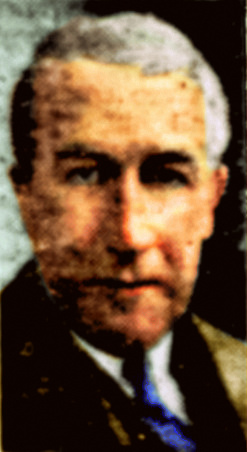
Simms: Allies, French cooperate well
Invasion chiefs aid in liberated areas
By William Philip Simms, Scripps-Howard foreign editor
Cherbourg, France –
Despite dire predictions of critics of Anglo-American policy, the collaboration between the Allies and Gen. Charles de Gaulle’s representatives in France is working out very well.
The appointment of Paul Renault as mayor of Cherbourg was in line with de Gaullist procedure. Article III of the Algiers ordinance regulating such matters calls for the Vichyites and the installation in their stead of officials appointed or elected prior to September 1939.
Similarly, Vichy’s subprefect here has been supplanted by a local engineer, M. le Viandier, a leader of the Committee of Liberation. He was put in officer by the de Gaullist regional commissioner, Francois Coulet. The subprefect at Bayeux, likewise appointed by M. Coulet, has a similar political background. Apparently, this procedure will be followed throughout the rest of France.
Allies approve
Meanwhile, far from offering objections, the civil affairs branch of the Allied General Staff is looking on with approval. Instead of elbowing the French out of the way and insisting on bossing things, it is making itself helpful but unobtrusive. It neither seeks nor wants political power. On the contrary, it wants only non-interference with Allied military operations. That, of course, presupposes reasonable law and order behind the lines, and as long as these few requirements are met its main job will be to facilitate the task of the French civil authorities in charge.
Gen. Dwight D. Eisenhower and everybody under him are leaning backward in their desire to leave practically everything but the fighting to the French. To conserve the local food supply for the French, towns behind the front are “out of bounds” for soldiers. The purchase of anything except nonessentials is taboo. The armies of liberation are not living off the land; they are bringing everything with them.
Sleeps on floor
An icy drizzle was falling when I arrived in Cherbourg. I was badly in need of a dry place to sleep. At headquarters in a furnitureless house, I asked if they could direct me to a hotel. The answer was a polite reminder that we were not supposed to discommode the inhabitants.
“We sleep on the floor right here,” I was told. I spent the night on a filthy mattress left by the Germans in a wrecked house through the roof of which a cold rain trickled and turned to mud the dust and plaster which littered the floor.
Tales about Washington trying to ram Vichyites or Fascists down the unwilling throats of liberated Frenchmen and otherwise meddle in France’s affairs seem ridiculous here. So far, the French and the Allies are getting along well.
But a good word on behalf of his Allies from Gen. de Gaulle to the people of France, just now beginning to emerge from four years of Nazi blackout, would go a long way towards a still better understanding.